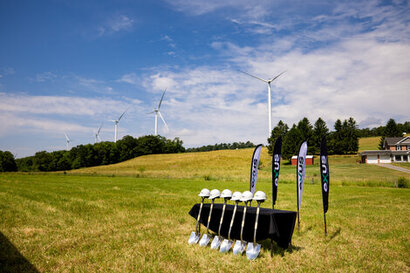
Wind energy repowering involves upgrading older wind turbines or entire wind farms with the latest technology to increase their efficiency, capacity, and lifespan. This process typically includes replacing outdated components such as turbines, blades, and nacelles with more modern, efficient versions.
Repowering can also involve updating control systems and other infrastructure to enhance performance.
The primary goals of repowering are to:
Increase Energy Output: Newer technology generates more power from the same wind resource, thanks to improved design and efficiency
Extend Turbine Life: By replacing aging components, the operational life of the turbines can be extended, making the investment in wind farms more viable long-term.
Reduce Maintenance Costs: Newer turbines require less maintenance, which can significantly lower operational costs.
Enhance Reliability: Modern turbines are more reliable and less prone to breakdowns.
Optimise Use of Existing Sites: Repowering allows for the continued use of sites that have proven wind resources, existing infrastructure, and grid connections, which can be more cost-effective and environmentally friendly than developing new sites.
The Twin Ridges repowering, which involves replacing the nacelles and blades of the existing wind turbines while retaining the towers and foundations, will produce a 30 percent increase in energy generation for the project and residents of Southwestern Pennsylvania.
“As the wind energy industry faces increasingly complex obstacles to growth, including a nearly 3 gigawatt interconnection queue of renewable energy projects trying to connect to the grid, repowering has become a path to help meet clean energy goals” said Jim Spencer, CEO of Exus Renewables North America. “Thanks to these upgrades, the Twin Ridges project will generate clean, reliable and renewable power - and millions in community investment - to the region for decades to come.”
Exus Renewables will invest approximately $200 million in the project, creating 150 union construction jobs. It expects to inject over $7.35 million into the local economy through the procurement of materials and services from local suppliers and anticipates that over the 30-year life of the project, more than $100 million will be invested in the community through tax and landowner payments. Vestas American Wind Technology supplied American-made nacelles, hubs, blades, and tower adaptors for the project.
For additional information:

